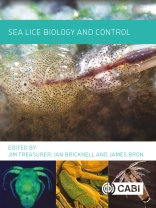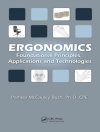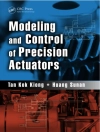Sea lice are one of the most important and costly health issues for Atlantic salmon aquaculture and for culture of many other marine fish species. In addition, the extent and causes of impacts of sea lice upon wild salmonids has proven a hotly debated issue and one that continues to affect public perceptions of aquaculture. It is over 30 years since the last dedicated book on sea lice biology and management, Pathogens of Wild and Farmed Fish: Sea Lice (Boxshall and Defaye, 1993), and a volume of current perspectives is overdue. The current book updates knowledge concerning the biology and management of sea lice, authored by over 60 world-leading researchers, practitioners and industry experts, written in an accessible and engaging style. New topics include genomics, vaccinology, physiology and epidemiology, and aspects of interactions with wild fisheries are thoroughly reviewed.
Sea Lice Biology and Control is of interest to and provides an invaluable reference for sea lice researchers, parasitologists, students, fish farmers, veterinarians and other fish health professionals, wild fish biologists and managers, regulators, government, fish certification professionals and NGOs. The book provides an authoritative overview of sea lice and their interactions and gives a clear illustration of the application of the principles of integrated pest management in an aquaculture context.
‘This volume covers an impressive array of topics, guiding the community on their journey towards awareness of the most recent advances in sea lice biology and through to the latest genomics studies.’ – Prof. Geoff Boxshall FRS
Despre autor
Professor James Bron heads the Aquatic Parasitology Research Group and is Professor of Aquatic Animal Health at the University of Stirling’s Institute of Aquaculture. Over the last 35 years he has conducted extensive collaborative research on sea lice, working with academia, industry, government and NGOs to better understand aspects of sea louse biology and management, aiming to improve health and welfare of farmed and wild fish to better support sustainable and resilient aquaculture and capture fisheries.












